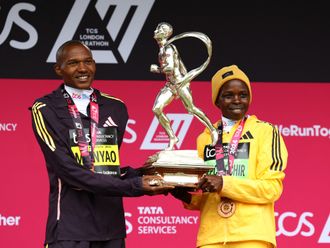Rosa Khutor, Russia: Snowboarding and freestyle have been making waves at the Olympics for their spectacular repertoire of daring moves, but the number of bruising injuries has also sparked accusations of sheer recklessness.
Sometimes it is more than just injuries as two years ago Canadian skier Sarah Burke died at just 29 after crashing on a superpipe in Utah.
She was a relative veteran as one striking feature of these disciplines is the proliferation of young athletes, many barely out of their teens, or even still in them, such as men’s snowboard halfpipe medallists from Japan, Ayumu Hirano, 15, and Taku Hiraoka, 18.
It has led to suggestions that youth has brought a certain reckless abandon to the sports, leading to greater risks.
Yet in Sochi, many have been blaming the courses, claiming they are sub-standard, although serious injuries have been few in Russia.
American halfpipe competitor Danny Davis said the course in his event was “bumpy, it’s just not a good pipe”.
Yet according to Canadian veteran Crispin Lipscomb, 34, the real cause of the crashes is the pressure being put on athletes to get results.
Although athletes such as Norwegian snowboarder Torstein Horgmo, with a broken collarbone, and American moguls skier Heidi Kloser, with a broken thigh and torn cruciate knee ligament, have been forced out of these Games after training crashes, Lipscomb says the sport is not becoming more dangerous.
“I don’t think we’ve seen more crashes but just the level of the riding creates really hard crashes and big falls,” he said.
“All the time when you’re learning and pushing yourself and trying new techniques, you’re going to fall and make mistakes.
“Now the margin of error is a lot smaller, the beat downs are pretty bad these days.”
That margin of error has been shortened by the pressure to win, says Lipscomb.
“There is a change in the way the game is played because... it’s more and more pressure for [athletes] to deliver some high level work.”
Lipscomb, though, does believe that experience improves riders’ decision-making processes.
“The sport has got to a dangerous place so we want it to be as safe as possible.
“But again there are parameters here where a wise athlete and experienced athlete will pick their battles and draw strength and opportunities from every day of training, and from there they can use it in their final runs.”
American snowboard cross racer Nate Holland, 35 and a seven-time X-Games champion, agrees that with experience, an athlete is less likely to get involved in a crash.
And he says that is particularly useful now that cross has gone from four to six-man races.
“Racing a six-man race is definitely a lot more complex,” he said. “There is a lot more traffic on the course, the percentage goes up of someone messing up and taking you out.
Excitement
“As a veteran, the experience comes into play by identifying those situations or riders to keep yourself out of those messes.”
But for his cross teammate Nick Baumgartner, the danger of the event is what excites him, and he would even welcome more riders into the field.
“I think it’s more dangerous [with six] and it’s more exciting. It changes it, anything can happen, it’s totally unpredictable when you’re going down the course.
“As for me, that’s why I enjoy the sport, I like to have that. If it’s dangerous and scary, and I overcome that and do well, that’s what I’m looking for.
“I’m looking for that rush, that adrenaline; that’s the reason I do it, that’s what brought me to this sport.
“Add more people, make it even scarier because that’s what I’m here for. I want to have some fun with it and enjoy it.”











